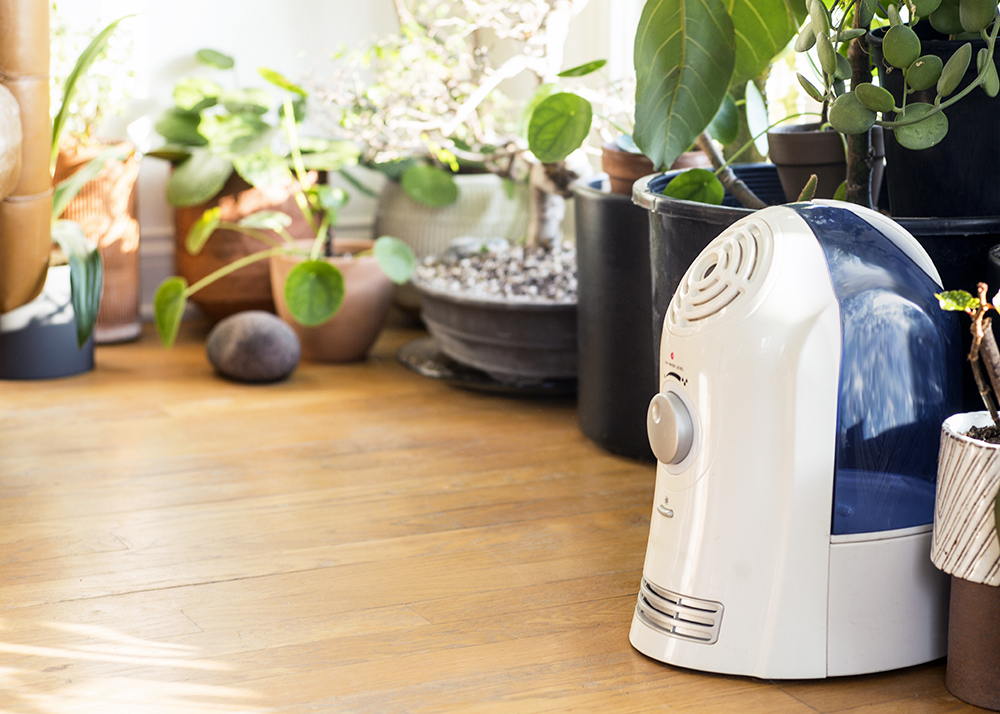Beat the Winter Blues and Keep Your Houseplants Happy
Winter, while lovely in its own right, can be one of the toughest times of the year for us for multiple reasons. The decrease in daylight, cold temperatures, and short days can leave us feeling out of sorts. It’s no surprise that it can also be pretty rough on our plants too. Read on to find some of our essential tips on keeping your plants happy and healthy during the winter.
Transporting
One of the biggest steps to ensuring your plants stay happy during the winter happens during the first few minutes after you buy them. Most houseplants are native to tropical environments, and they aren’t used to temperatures below the 50s. When transporting your plant back home, make sure it stays within the bag, or in a protective plastic or paper sleeve. It’s also important to not leave your plant in a car while running errands— what may not seem like a long time to you is still enough time to cause cold damage to your plants. Any prolonged exposure to cold or freezing temperatures can shock your plant and cause permanent damage. Cold damage on plants will typically look like sunken, thin, and limp dark spots on the leaves or stems. This happens at a molecular level when water inside the cell walls freeze and then defrost too quickly, causing parts of the plant to die off.
Heating
It’s hard to imagine getting through the winter without some form of heating keeping us warm. While central heating is great for us, it’s important when figuring out places for your plants to reside that they don’t take up shelter directly underneath a heating vent. The hot air blasting from them can cause your plants to dry out quicker, leading to brown and crinkly leaves. Instead, try moving your plants to another location away from the vents, redirecting the flow of the heating vents away from your plants, or, if you’re not going to be impacted by it, closing off the heating vent. When thinking of a place for your plants to live and thrive, keep them away from any vents, but still close enough to a window where they’ll receive the correct light. Using a humidifier during the winter months can help to keep your tropical houseplants happy and healthy while the heat is running. For those without access to a humidifier, it’s possible to group plants together to increase the relative humidity directly around them.
Watering
During winter, it’s especially important to check your plant's soil before watering. One of two things can happen, depending on the conditions in your home: you’ll be watering less, or in some cases, more. Once the central heating kicks on, you may have to water more frequently, as your plants could dry out quicker from the dry air indoors. On the other hand, with less daylight hours and the sun not being out as much, you may have to water less often to match the amount of light your plant is receiving.
Prior to watering, break up the dry top soil with your fingers or a small, thin object to ensure that the water is evenly absorbed into the soil, rather than escaping between the soil and the sides of your planter.
As always, it’s also important to use water that’s around room temperature. Most indoor plants are topicals used to warmer and more humid climates, so either side of extreme temperatures can shock your plants.
Lighting
Unfortunately, multiple overcast days at a time is a problem we have to put up with during the winter. For plants, this translates to slower growth, and in some species, a full stop in growth until spring rolls around. If you don’t notice your plant doing much, but you swear you’re doing everything by the book, don’t worry too much. As the old saying goes, “no news is good news.” Your plant will more than likely reward all of your hard work once spring comes around, and daylight increases.
In the meantime, if you’re adamant on having your plants grow, purchasing grow lights for them is never a bad idea. Grow lights supplement for a lack of natural light, allowing your plants to grow in places that aren’t necessarily near a window.
Winter can be a challenge for houseplants sometimes, but following these tips should give you an easier time caring for them. As always, if you have a question that we didn’t answer, feel free to check our HELP! page, ask down below, or visit one of our shops to ask in person. We’re always happy to help!
Written by: Egan Thorne
Photos by: Emily Kellett





